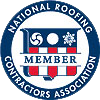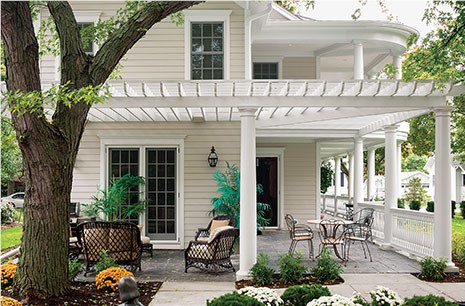
Creating a safe home environment is your top priority. However, there are a number of serious health hazards that lurk around your home, including floods, fires, and choking hazards. Thankfully, there are a number of precautions you can take to eliminate these hazards and keep your family safe. Take a look at 10 common dangers in your home and what you can do to protect your family.
Carbon monoxide poisoning
High levels of carbon monoxide in the home can cause headaches, dizziness, vomiting, impaired vision, and even death. Carbon monoxide is impossible to detect by smell, sight, or sound. To ward off carbon monoxide-related injuries, you should install a carbon monoxide detector. These detectors plug into the wall and immediately alert you if carbon monoxide levels get too high.
Drowning
Drownings aren't just an outdoor risk, they're an indoor risk as well. Every day, about 10 people die from unintentional drownings. Of these 10, two are children aged 14 and younger. To help prevent accidental drownings in the home, you should closely monitor infants, young children, elders, or the mentally handicapped during bathtime and ensure that hot tubs and swimming pools are gated.
Burns
The convenient appliances used every day in the home can pose a risk for burns, especially for young children. There are approximately 450,000 people who receive medical attention for burns every year. Curious, little fingers often come across hot surfaces that can result in serious burns. This includes stoves, hot pans and plates, fireplaces, and large amounts of steam. To reduce the risk of burns, make sure your dishwasher is securely latched to avoid being scalded by steam. Use back burners and stove knobs to reduce the chance of stove burnings.
Poisoning
There were over two million poisoning-related incidents in 2016. Several household items present poisoning hazards, including household cleaning items and maintenance supplies. A little diligence and taking the right steps can decrease the chance of anyone in your family becoming a victim. By properly storing medications, keeping paint out of reach, and securing chemicals, you avoid the chance of family members accidentally ingesting poison.
Fires
Candles and unattended appliances could lead to an accidental fire in the home, resulting in extensive damage to your property and belongings. Fires cause an estimated $7.3 billion in property damage and claim 2,500 lives each year in the US. Luckily, there are a number of things you can do to prevent fires. Regularly checking your fire alarms and changing the batteries ensures you have adequate warning, should a fire occur. Keep candles away from curtains or loose materials. Ensure all appliances are in good working order to reduce the chance of a fire.
Mold
You can expect to find mold in your home in moist, damp areas or in places with poor ventilation. According to the Mayo Clinic, mold spores can trigger asthma attacks and lung infections in people with chronic respiratory disease. To eliminate mold from your home maintain a consistent cleaning schedule. Also, you should always thoroughly dry carpet, drywall, and insulation. Discard any that was left wet for two or more days—this is a breeding ground for mold spores. Always ensure your home is well-ventilated.
Flooding
Water can wreak havoc on your home. Over the past 20 years, flooding disasters affected more than 2.3 billion people. Floodwater causes damage to a home's foundation, insulation, drywall, flooring, and electrical systems. To prepare for water damage, direct rain gutters away from the house, set up barriers, and purchase insurance if you live in a high-flood area.
Fireplaces
Whether it's wood, gas, or electric, there are a number of potential hazards your fireplace holds. Gas fireplaces are particularly dangerous in the home—especially for children. They can increase levels of carbon monoxide in the house and can increase the chance of burns. There are a few tips for keeping safe around your gas fireplace. Installing barriers, turning the fireplace off, and monitoring your children around the fireplace decreases the chance of your children harming themselves.
Choking hazards
There are a number of items around the home that pose a potential choking threat to children. In fact, choking is the fourth leading cause of unintentional death in children under five. Most of the biggest household choking hazards come from small toys and hard food that can easily block the airway. To keep your home choke-free, remove any small toys or loose parts that little hands can pick up. You'll also want to keep small, hard foods (like nuts or hard candy) out of reach of children. Be sure to monitor children during meals, as well.
Cuts
Cuts and scratches can happen to anyone in your family, at any time. There are a number of common household items that contain sharp edges on which cuts can occur. To prevent cuts from occurring, there are a number of precautions you can take. Safely storing kitchen supplies, putting away yard tools, pointing knives and forks down in the dishwasher and in drawers, and closing the trash can all reduce the chance of cuts in the home.
Nothing is more important than keeping your family safe. There are a number of potential hazards in your home that can pose danger to you and your family. Knowing what to look out for and what precautions you can take makes your job as protector a little bit easier.
Written by Hilary Thompson for The Healthy Moms Magazine and legally licensed through the Matcha publisher network. Please direct all licensing questions to legal@getmatcha.com.
At Dr. Roof Atlanta, we ensure everything under your roof remains a safe environment for the whole family. Maintaining your roof, windows, siding, and more will help reduce the risks of mold, flooding, and other hazards. Reach out to learn more about how we can help protect everyone under your roof!
Subscribe to Dr. Roof's Blog





Comments